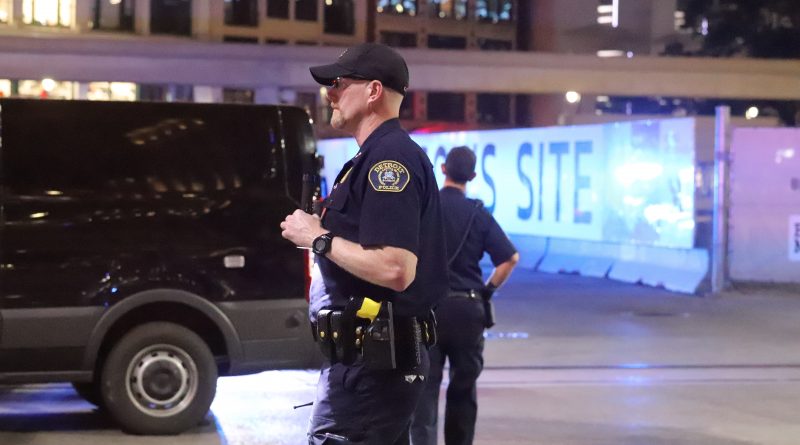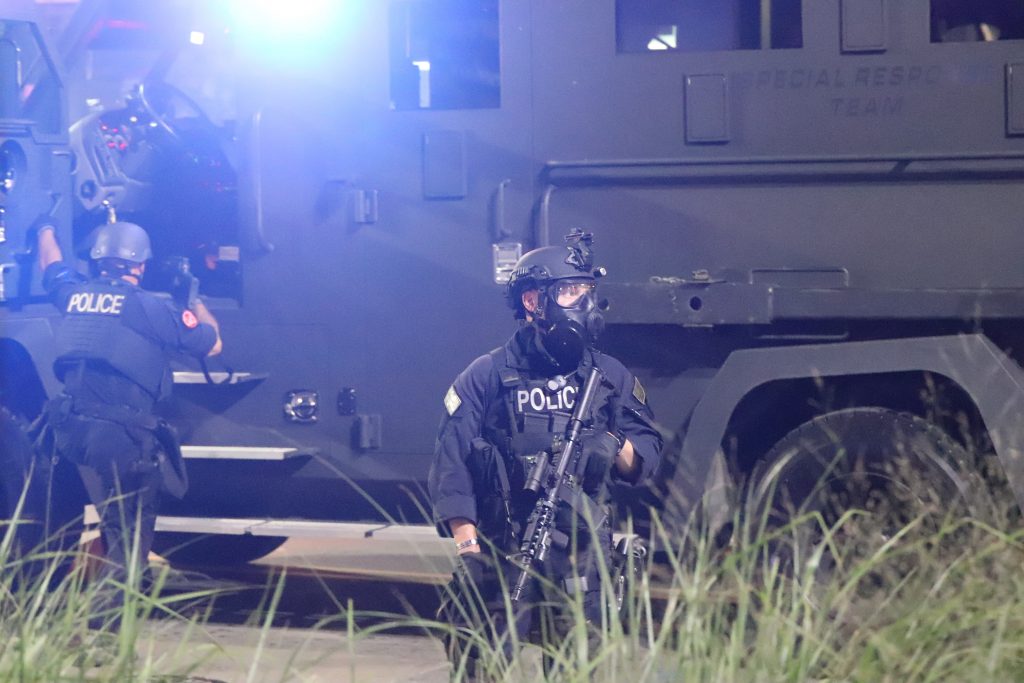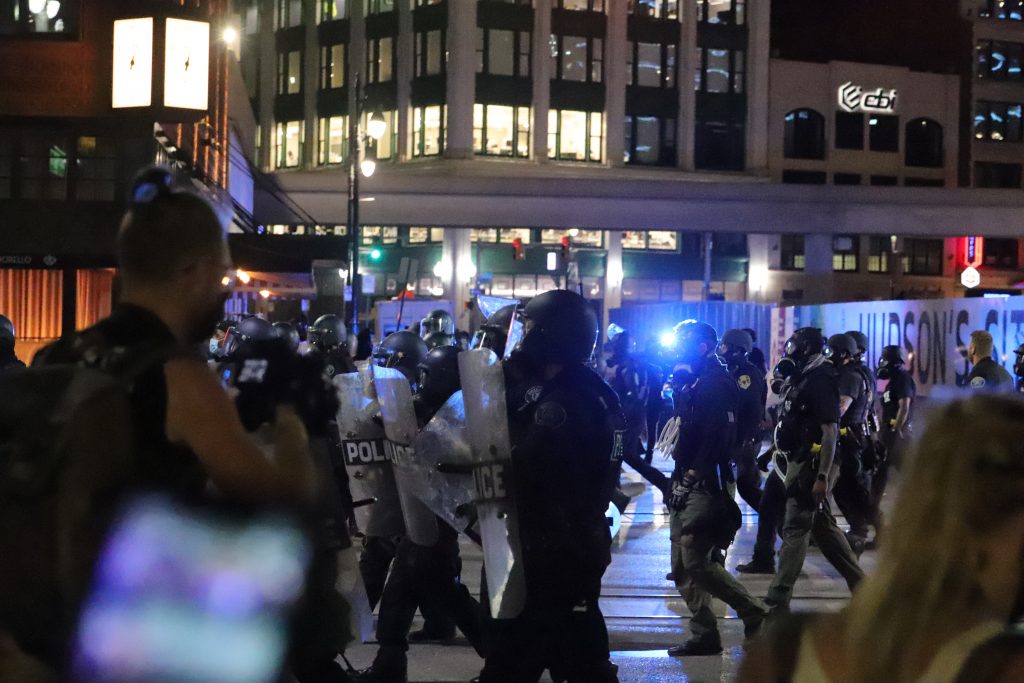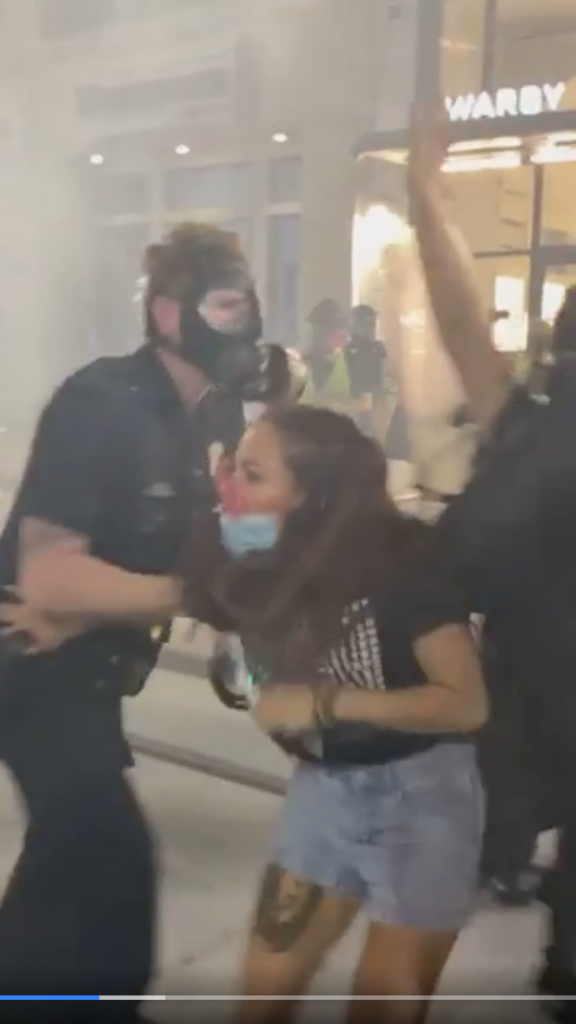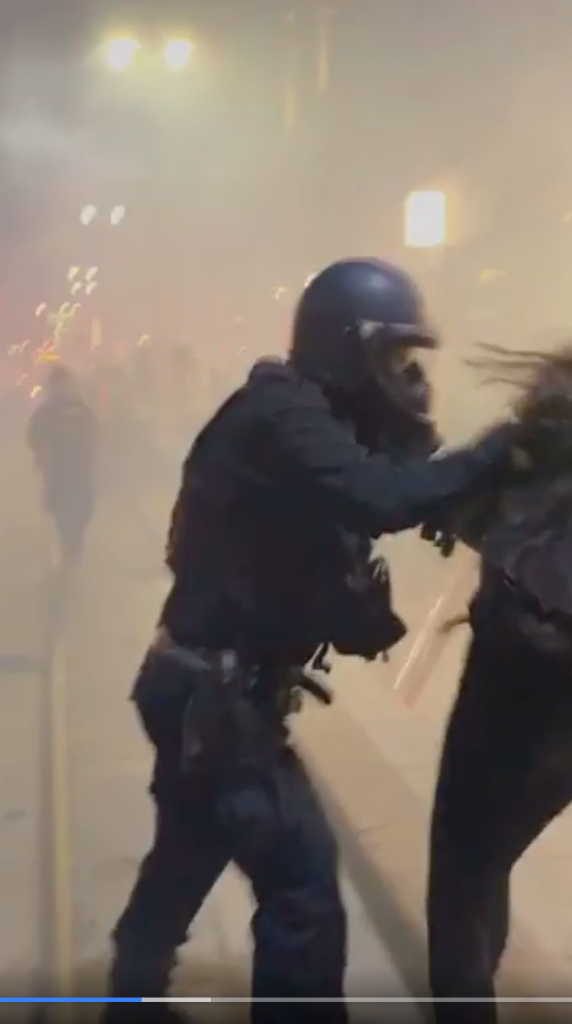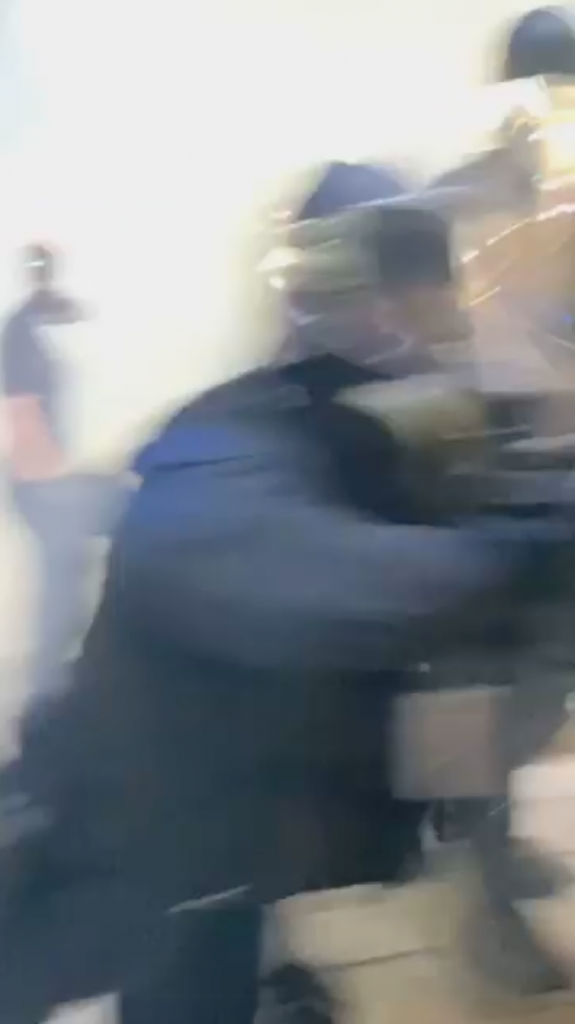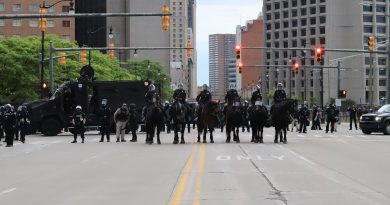Nice To See You Again: DPD Back in Full Force
Detroit Police deployed an arsenal of chemical agents against unarmed protesters who occupied Woodward Avenue downtown last night, marking a profound shift from what has otherwise been a largely quiet summer in the city since a week of protests marred by police violence following the death of George Floyd in Minneapolis. Not even journalists and legal observers were spared, with at least one legal observer from the National Lawyers Guild being arrested. The protests, organized by Detroit Will Breathe, targeted federal officers deployed to Detroit in the recently announced Operation Legend, ostensibly aimed at combating major drug crime and street violence. Protesters worry that the deployment of federal officers constitutes a threat to the Constitutional right of assembly and free speech, pointing out the deployment of officers to Portland and around Washington, DC who have been extensively implicated in numerous acts of violence.
PROLOGUE: A LAW AND ORDER PRESIDENT/MAYOR
Last week Detroit Police Chief James Craig took a mysterious helicopter ride with US Attorney General William Barr to discuss federal operations. Barr has been making the rounds as a spokesperson for the embattled Trump Administration as it attempts to reinforce a perception that it has control of growing economic turmoil and social unrest. Critics claim that this appears to be a publicity stunt, as Trump’s own federal budget slashed funding to hire more police. The presence of unidentified federal officers in Portland who were accused of “disappearing” citizens, protesters or not, sparking fears of the same happening in Detroit.
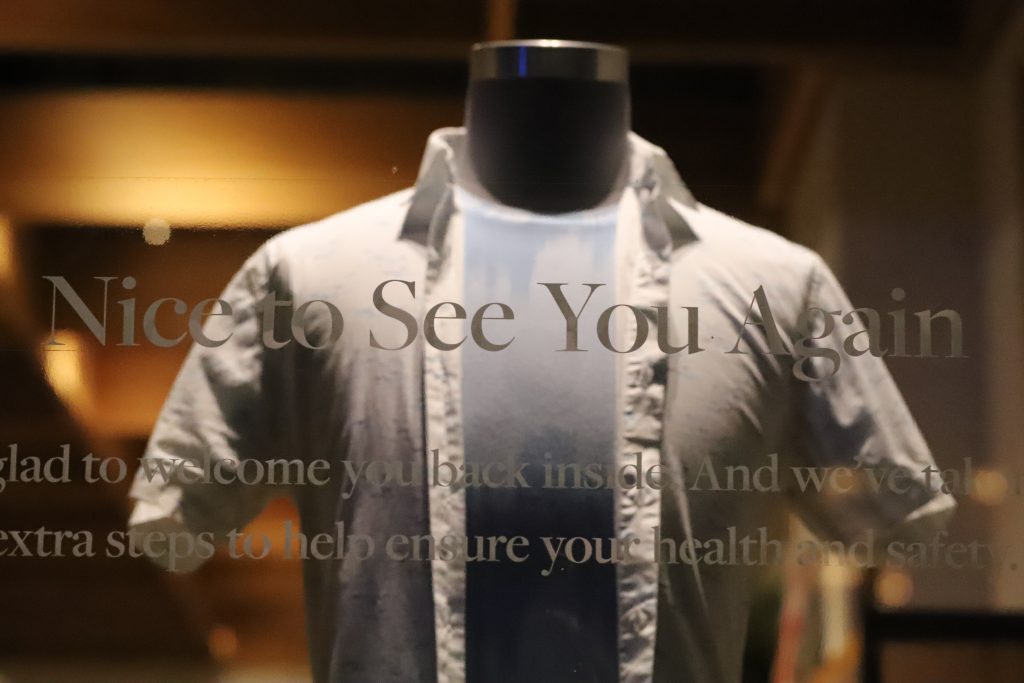
A RETURN TO THE MEAN STREETS OF GILBERTVILLE
Last night was the first protest I had attended in some time, having been swallowed up by my toughest quarter yet in my MBA. I had been at Cadieux Café on the far east side of Detroit. A friend’s friend led a Bob Dylan cover band, which was great. There were mussels. So, when we got home, I wasn’t quite prepared to receive a text from a colleague suggesting I come downtown. It had been awhile, so, though not a joyous occasion, I saw it as more of an opportunity to hit the mean streets of Gilbertville and get back into the goings-on a bit. The protest mostly occupied the street between Grand River to the south and Clifford/John R. to the north.
To the uninitiated, this is the same block as the Shinola Hotel. There’s a Lululemon. The block to the south hosts the Hudson’s Site where, in 1997, taxpayers paid to demolish a perfectly usable brick castle of a former department store, only to leave it vacant for another 22 years until Dan Gilbert broke ground on what was going to be the tallest building in Michigan. Oh, wait, not anymore. But they’re still taking those hundreds of millions of dollars in public money. And not including any affordable housing units, because.
WHOSE STREETS?
It would be hard to find a more iconic setting. I posed, tongue-in-cheek, whether the blood on the Louis Vuitton in Chicago was a referendum on the zeitgeist. But there was something particularly zeitgeisty about the scene last night. The racially mixed crowd, city and suburban, squared off against a disproportionately suburban police force. Many cops are white in a mostly black city. The scene took place in front of a massive and controversial figurehead of Detroit’s revival (remember my 2014 article!? Of course you don’t!). Protesters demanded reform in a canyon rebuilt with corporate welfare, resulting in a nearly uncontested real estate monopoly by a single landowner who receives billions in public subsidies while the city shrinks and schools close.
So, interesting, but I digress. Police presence was fairly minimal until the department decided to deploy the full riot squad around 12:30am. Protesters had turned a handful of street repair signs into a slapdash barricade. One protester related to me that a few riot police had tripped over the barricade when crossing it, eliciting heckling and jeers from the protesters, which probably incited them to a greater measure of fury when the gas canisters were unleashed minutes later. Police closed in on the crowd, swinging batons and shields and tackling protesters to the pavement. (There was no threat of an oncoming QLINE because the embattled streetcar has been shut down for most of the pandemic).
A legal observer challenged one of the commanding officers.
“[Deputy Chief] Bettison told you not to arrest legal observers,” she said.
“Is Bettison here?” he snapped back.
Bettison, it turns out, was not there.
To be clear, this was a nonviolent protest. No one was breaking windows. No one was fighting. No one was looting. And yet.
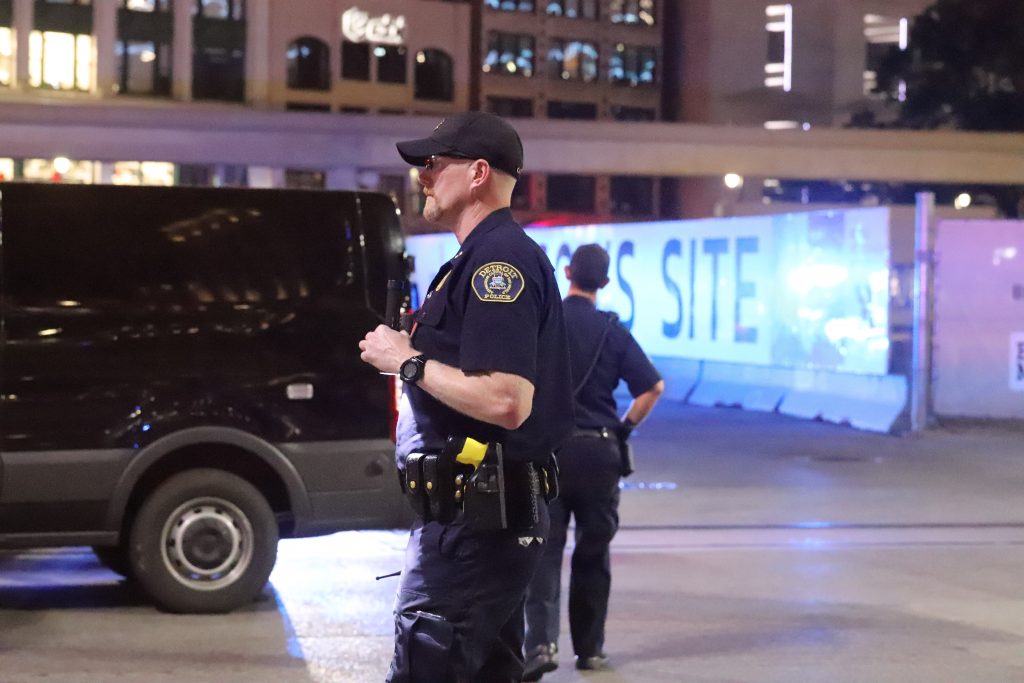
COPS LET LOOSE
Take, for example, this officer with the baseball cap. The man was about to lose it on three photographers who were observing the riot police line advance. He yelled at us to get out of the street, and we responded individually that we were press. He told us that we weren’t wearing our department-issued media badges.
Let’s back up a second. This media badge thing is a quaint procedure the Department adopted in June after prominent journalists from the Free Press, Detroit News, and Metro Times were tackled, arrested, and even their eyeglasses broken. The idea was to create a foolproof system that would allow anyone to clearly identify a journalist. You know, so clear that even a cop could see it.
Most journalists duct-taped the sheets to their shirts, front and back. Some used red duct tape for extra effect.
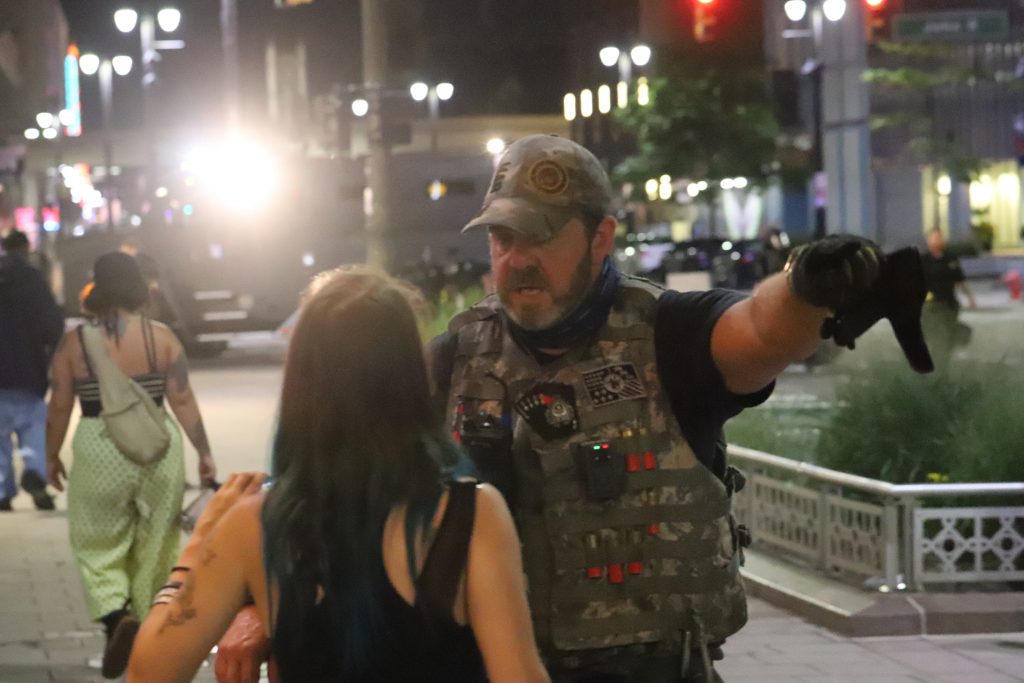
A Detroit officer, or possibly Gunnery Sergeant Hartman from Stanley Kubrick’s Full Metal Jacket (1987) after years of a Southeast Michigan diet. Or maybe that’s just how all Marines act? The officer in question detained a teenager who was walking away from the protest. August 23, 2020. 
Protesters (faces blurred) sit on the curb in front of Shinola’s downtown store, connected to the Shinola Hotel, August 23, 2020. 
An unidentified DPD officer pepper sprays a protester being held against the ground on Woodward Avenue, August 23, 2020 (photo by Adam Dewey).
But yesterday and today both, no passes were issued. If I’m wearing my journalist hat, I have to ask why this might have been, given that this was the first protest in quite some time in which tear gas had been deployed. James Craig has a penchant for blaming the protests on “outside agitators.” When pressed about it, he always resorts to the line that he can’t get into classified intelligence.
Take a look at the faces of the officers I photographed. Of the ones I photographed macing protesters, screaming in the faces of unarmed citizens while themselves under protection of full body armor, gas masks, and ballistic helmets, most were white. Most police in Detroit do not even live in the city. Who are the real outside agitators? This protest started peaceful and it ended with dozens of arrests, blood, coughing, and trauma that will linger for years. Who’s creating the violence here?
EPILOGUE
I drove home a friend I had run into at the protest. We had a beer on her porch, but I couldn’t seem to find much in the conversation to grasp onto. It was late when I got home, around 2, and I had a turbulent sleep. I woke up this morning with an ornery post-nasal drip and a wet feeling in the back of my throat. I coughed an unproductive cough, but the wet feeling stuck around for about the next twelve hours. No bruises or pepper spray this time, which was nice. Still, it’s exhausting. I also don’t see it getting too much better any time soon. I don’t see Mike Duggan apologizing for his police department’s lack of self-control. I don’t see cops apologizing for being violent human beings.
I don’t see James Craig apologizing ever. Were he to apologize for instances of brutality, he’d be admitting that he lacked control over his department. But if he were to outright deny that it was happening, he’d be telling an outright lie. Sitting on that fence must be a political calculation. But it’s also a perilous one. Democracy isn’t just about protests– it’s about utilizing a diverse arsenal of tools to rectify injustices and, as needed, remove people in power who continually screw it up.
Neither the Detroit Police Department nor Mayor Mike Duggan’s office responded to a request for comment. Which is, be it said, par for the course.
This article previously misattributed a photo credit, a mistake owing to the format in which the original photo was shared with us electronically. The appropriate photo credit, by Adam Dewey, is now shown above. Handbuilt strives for accuracy and precision in coverage and analysis. You can always write to Nat at nathaniel at handbuiltcity dot org.

